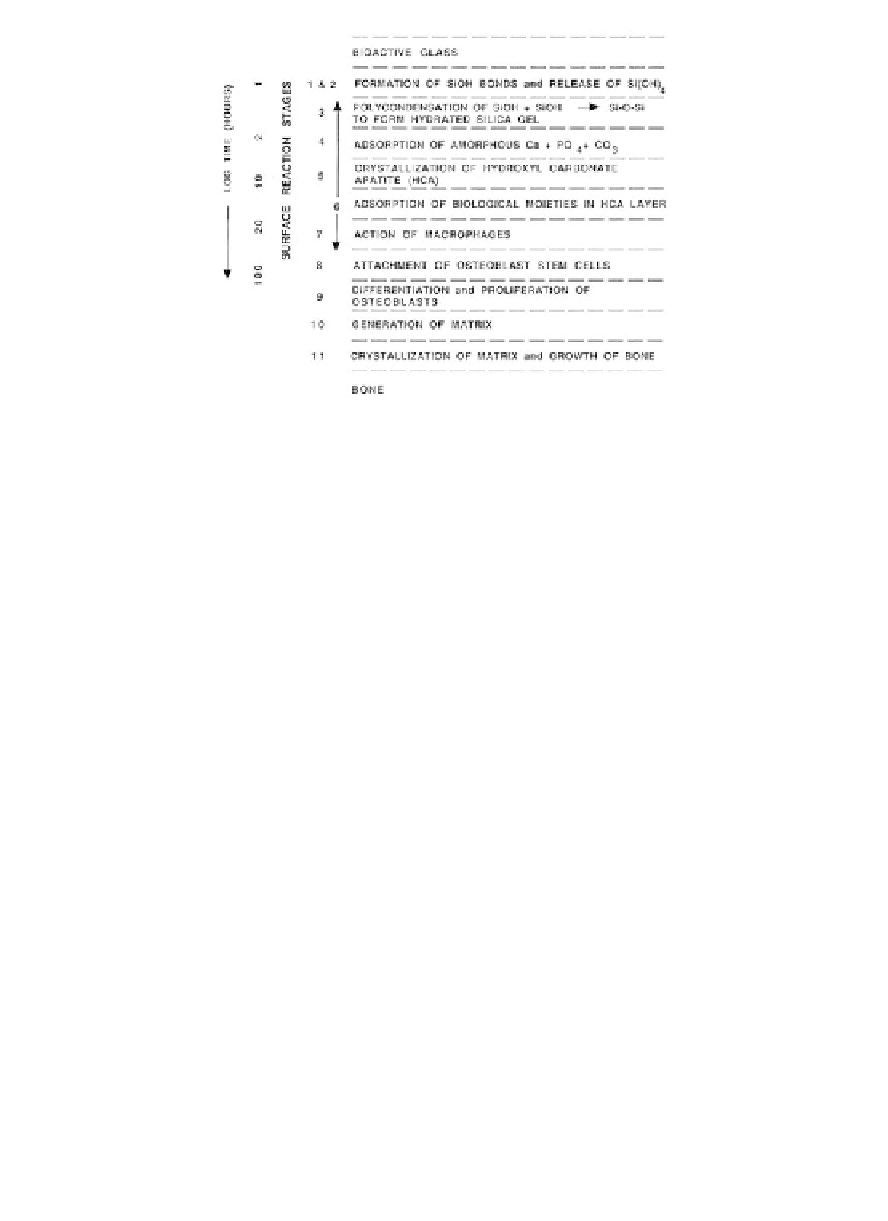Biomedical Engineering Reference
In-Depth Information
Figure 4.13
A sequence of interfacial reactions involved in forming a bond
between tissue and bioactive ceramics. Reprinted from Refs.
[49-52] with permission.
To extend the subject, it is important to refer to another set of
11 successive reaction steps for bonding mechanism of unspecified
bioceramics, developed by Prof. Paul Ducheyne (Fig. 4.14) [58].
One can see that the Ducheyne's model is rather similar to that
proposed by Hench; however, there are noticeable differences
between them. For example, Ducheyne mentions on ion exchange
and structural rearrangement at the bioceramic/tissue interface
(stage 3), as well as on interdiffusion from the surface boundary
layer into bioceramics (stage 4) and deposition with integration into
the bioceramics (stage 7), which are absent in the Hench's model.
On the other hand, Hench describes six biological stages (stages
6-11), while Ducheyne describes only four ones (stages 8-11). Both
models have been developed almost 2 decades ago and, to the best
of my knowledge, remain unchanged since then. Presumably, both
approaches have
of their own and, obviously, should
be updated and/or revised. Furthermore, in literature there are at
least two other descriptions of the biological and cellular events
occurring at the bone/implant interface [637, 638]; however, they
include lesser number of stages. Recently, one more hypothesis has
been proposed (Fig. 4.15). For the first time, it describes reasonable
surface transformations, happening with calcium orthophosphate
bioceramics (in this case, HA) shortly after the implantation [636].
pro et contra

Search WWH ::

Custom Search